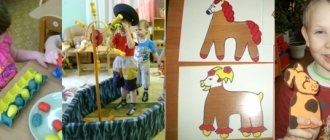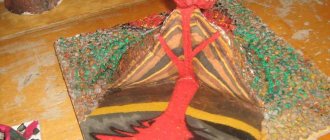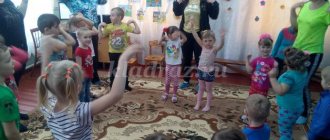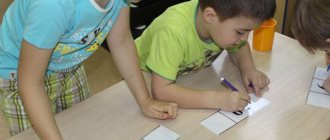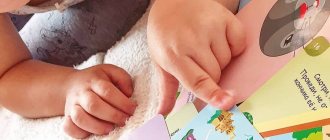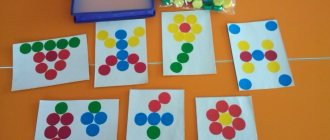Goals of didactic games in kindergarten
Didactic games contribute to the comprehensive development of a preschool child.
Their goals:
- formation of ideas about objects and phenomena of the surrounding world;
- consolidation of knowledge about flowers;
- familiarity with geometric objects;
- formation of ideas about right and wrong actions and actions;
- nurturing positive personal qualities, the ability to interact with others;
- familiarization with counting and numerical characteristics;
- development of memory, speech skills, concentration, ability to think logically;
- emotional and creative improvement, development of imagination;
- improvement of fine motor skills, general coordination and motor response;
- development of respiratory ability.
Didactic games for the younger group of kindergarten
At the age of 2-3, children actively get acquainted with the world around them and learn basic concepts. Didactic games for this age group are simple and involve one action. Group games are recommended; they teach kids to follow collective rules, develop communication and interaction skills to achieve goals.
Find a couple
For the game, prepare pictures of mittens and hats in 4 colors: green, red, yellow, blue.
Tell the children that the dolls are going for a walk. They have already put on their hats, but they can’t find mittens of the same color, they need help. Arrange the pictures chaotically on the table. The players' task is to find mittens that match the color of each hat.
Several people can play, each selecting their own 4 pairs. In this case, you can organize a competitive game: the first one to match all 4 pairs of mittens to the hats wins.
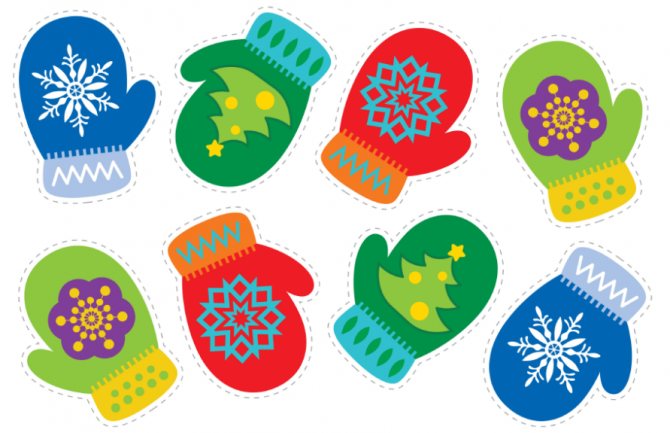
listen carefully
Give each student a flag. Play music or, if you are musically inclined, play an instrument. When the music is low, children should sit quietly with the flag down. And when the music starts playing loudly, the students raise a flag above their heads and wave it.
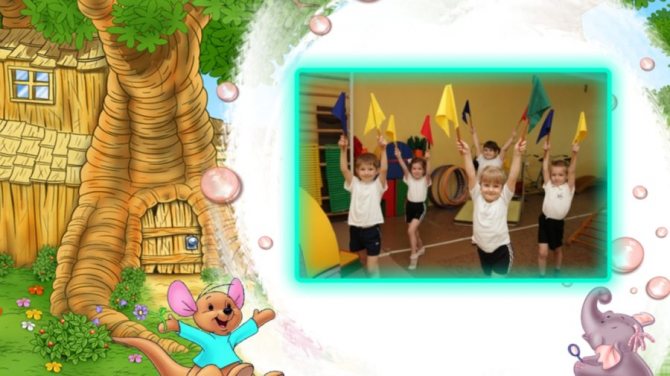
Make beads
For the game, prepare laces and beads of 4 colors: red, blue, green, yellow.
Tell the students that the dolls have gathered for the name day, but they have nothing to decorate themselves with. Offer to make beads, show the children laces and a box of colorful beads. The task is to select beads of a certain color from a box and attach them to a cord of a similar color.
The game can be competitive. 4 children play, each making beads of a given color. The one who finishes it faster than the rest becomes the winner.
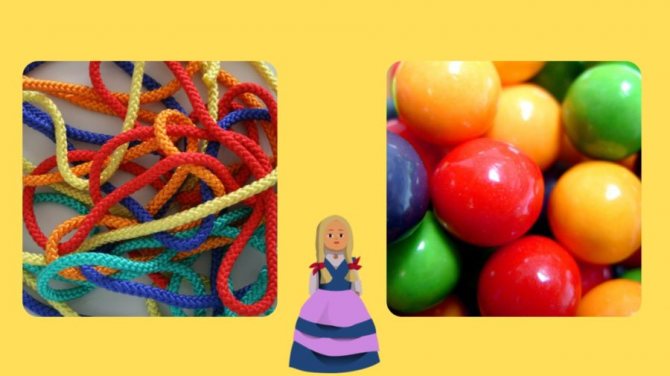
Find your match
To play, make cardboard geometric shapes in different colors. Distribute the pieces in pairs according to the number of players.
Place the cards in a box and ask the children to take them out one at a time. Let the players look at the pieces, then find the same one from a friend. You can repeat the action many times. You can complicate it by dividing geometric shapes not only by color, but also by size.
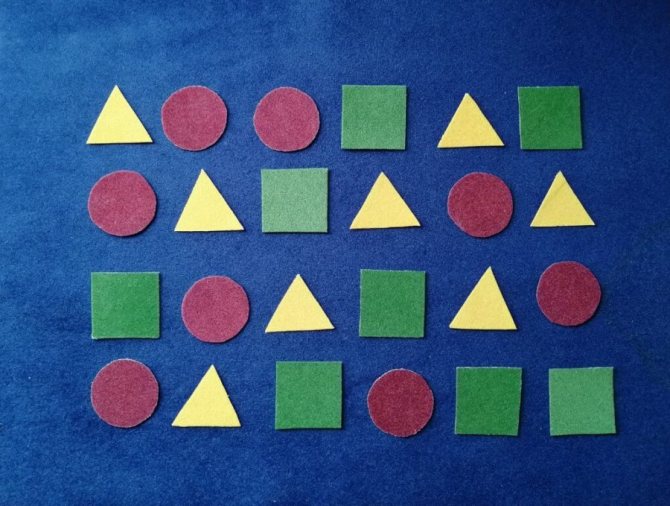
Collect a picture
Prepare pictures for the game depicting objects familiar to preschoolers, cut them into 4 parts. Also place real objects in front of the children that match the pictures.
The players' task is to collect the picture. The player who completes the task correlates the resulting image with a real object. The winner is the one who first collects the picture and correctly points to the object corresponding to it.
Bad or good deed
Print out pictures with positive and negative stories for the game. Let the students look at the images and evaluate the actions of the characters. For example: “The boy pulled the girl’s pigtail. The girl began to cry. He did something bad."
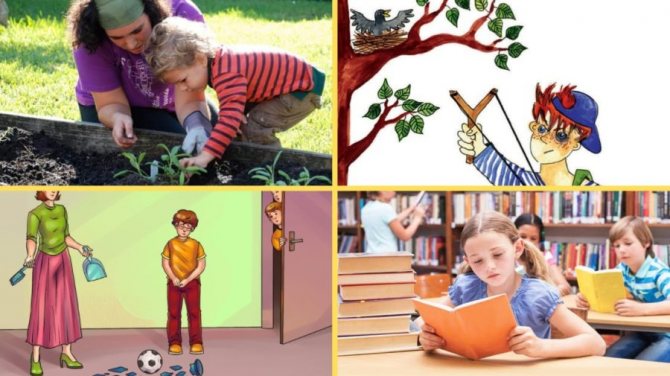
Butterflies are flying
To play, cut out 5 butterflies from colored paper. Tie each one with a 50 cm thread. And secure the thread to a rope stretched horizontally. The distance between the figures should be approximately 40 cm, and their height should correspond to the eye level of the preschooler.
Tell them that butterflies fly beautifully. Blow on one of them, ask the students to do the same. Children take turns standing near the paper figures and blowing on them. The game is competitive, the one whose butterfly flies farthest wins. Make sure that players keep their back straight, do not tense their shoulders when exhaling, and do not puff out their cheeks. Each player exhales once, and it should last no more than 10 seconds, otherwise dizziness may begin.
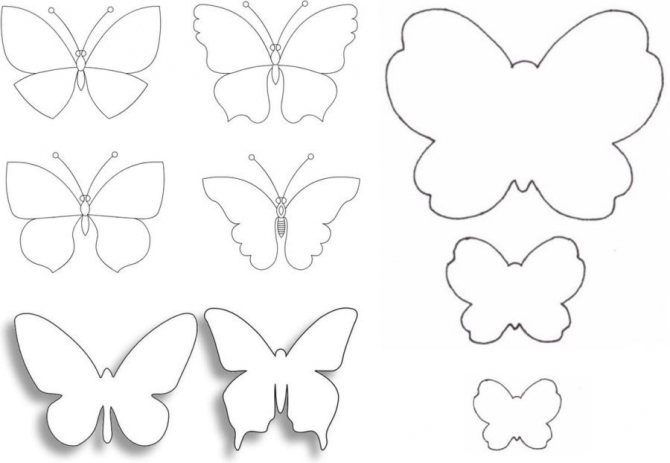
Educational games for children 5 – 6 years old by goal groups
| Target | Game name |
| Fine motor skills training | 1. Stringing |
| 2. Coloring | |
| 3. Origami | |
| 4. Shadow theater | |
| 5. Sort out the cereal | |
| Development of attention | 1. What has changed? |
| 2. What to do? | |
| 3. Claps | |
| 4 Elements | |
| 5. Guess the toy | |
| Development of logical thinking | 1. Drawings from geometric shapes |
| 2. Endings | |
| 3. Fill in the circle | |
| 4. Good - bad | |
| 5. What happens? | |
| Speech development | 1. Complete the sentence |
| 2. Daily routine | |
| 3. Who eats this? | |
| 4. 3 words | |
| 5. What was what? | |
| Numeracy skills | 1. Where is the ball? |
| 2. Forward and backward counting | |
| 3. Feed the animal | |
| 4. Measurements | |
| 5. Cards with numbers |
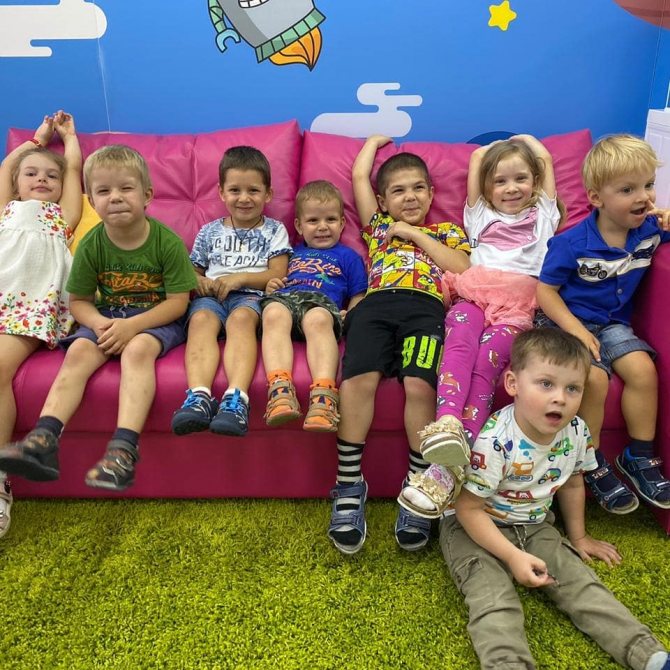
Games to develop fine motor skills
Since the initial development of relevant skills has already been established at this age, the following games will help further improve fine motor skills in older preschoolers:
- Stringing. You can string beads, rings, buttons, pasta and other items. You will also need fishing line or strong thread. You can hold a “fair” where beads, bracelets and other jewelry made by the children will be presented.
- Coloring. The game is held in the form of a coloring master class or competition. Children are given pictures with outlines of shapes and explained how to hatch. Pictures need to be painted in straight and diagonal directions.
- Origami. Children are given paper and explained how to fold the figures. Then you can offer to organize a competition or play paper toy store.
- Shadow play. Turn off the lights in the room and point the light source at the screen (from a distance of approximately 4 m). Children are shown how to use hand movements between a light source and a screen to create pictures on the screen. You can act out scenes with shadow characters.
- We sort through the cereal. For this game you need to mix 2 types of cereals (for example, buckwheat and rice or millet) and ask the child to help sort the cereal into their jars. Subsequently, the task can be complicated by adding 1 or 2 more types of cereals.
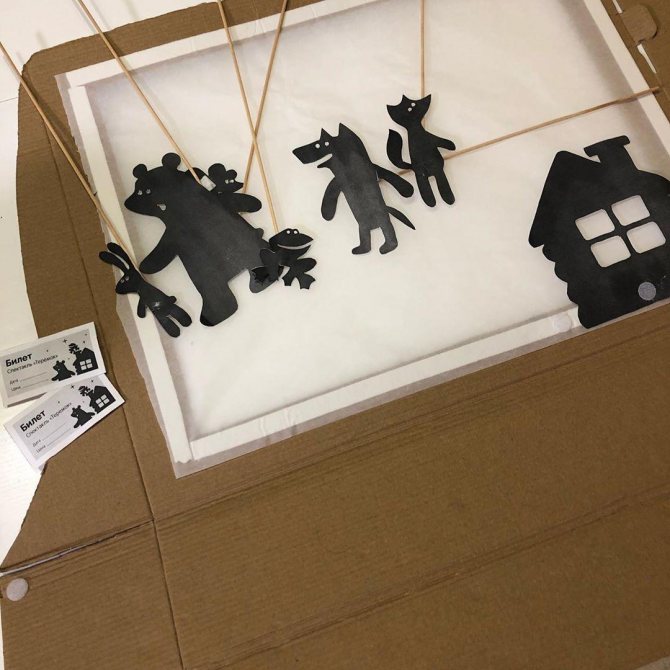
Experts believe that the development of fine motor skills is directly related to the development of speech and intelligence in general.
E. O. Komarovsky
Pediatrician, Ph.D.
Working with your fingers affects the speech areas of the brain. It is necessary to begin developing fine motor skills from six months to 6 years. As a result, speech is formed correctly, memory and imagination are stimulated.
— E. O. Komarovsky Pediatrician, Ph.D.
Games to develop attention
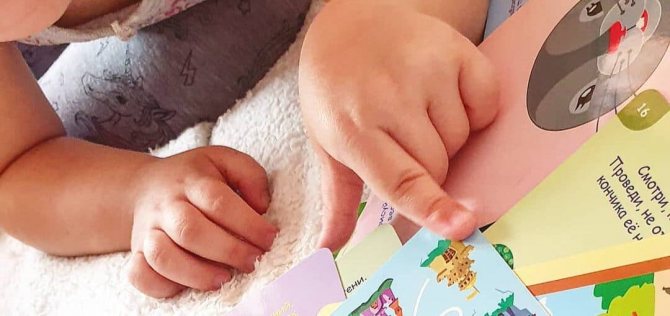
The following games will help your child learn to acquire, accumulate and apply new knowledge:
- What changed? Up to 7 (but not less than 3) different toys are placed in front of the child. At a signal, the child closes his eyes, and the adult removes one of the toys. Then, again at a signal, the child must open his eyes and guess which toy is missing.
- What to do? Before the game starts, children are explained what action to perform when naming a particular word. Then the children walk in a circle, and the leader calls out any of the previously discussed words. In this case, players must perform a certain action (for example, “stork” - stand on one leg, “crawfish” - walk backwards, “hare” - jump, etc.).
- Claps. This is a game similar to the previous one. Only instead of a word, children must perform a certain action for a pre-agreed number of claps. So, for example, 1 clap can mean “stork”, 2 – “crayfish”, 3 – “hare”, etc.).
- Elements. Children sit in a circle. When the leader names a certain element, they must perform a pre-agreed action (for example, “water” - lower your arms, “fire” - raise, “air” - spread your arms to the sides, “earth” - cross your chest).
- Guess the toy. The child needs to depict some actions that would characterize the proposed toys (for example, show how a bear, a fox, etc. behaves).
Julia
In pedagogical activity, one of the main directions is the development of attention, since the quality of teaching will depend on it in the future.
- Julia
Games to develop logical thinking
Logical thinking skills are necessary as preparation for further education. The following games will help develop the ability to think logically:
- Drawing of geometric shapes. Children are given various geometric shapes drawn on a piece of paper. The guys must draw an object or character from the resulting geometric figure (for example, an apple from a ball, etc.).
- Endings. Children are asked to complete sentences like: “Masha left the house before Vera, which means Vera is ... (later Masha).”
- Fill in the circle. Children are given sheets of paper with 6 circles drawn several times and are asked to paint them in such a way that there are as many filled circles as unfilled ones. The one who offers the most shading options will win.
- Good bad. The child is asked to analyze any phenomenon from all sides, paying attention to positive and negative aspects, for example: “A lot of mosquitoes are bad, they bite, but it’s good that the birds have something to eat. There are no mosquitoes - it’s good, but the bad thing is that the birds have nothing to eat, they will fly to other places and there will be a lot of mosquitoes.”
- What happens? Children are encouraged to ask each other questions and take turns answering, for example: “What is white? (cloud, towel, etc.)” “What is big? (joy, car, mountain, etc.).”
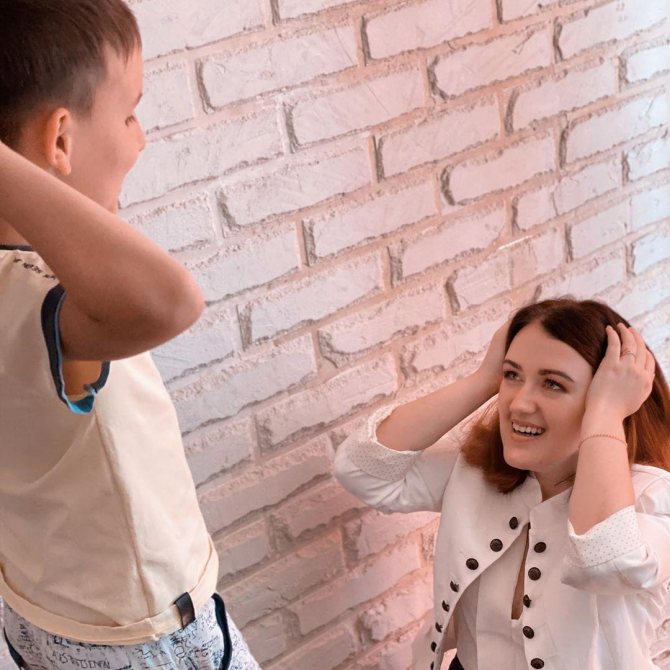
Elena
Orenburg
A child’s logical thinking needs to be developed systematically and in a timely manner, so that in the future he can study well and achieve his goals.
— Elena Orenburg
Speech development games
Speech development is an important stage of learning; the following games will help with this, by the way, closely related to the previous group of logic lessons:
- End of sentence. Children are asked to complete the sentences based on the context (Vita didn’t come today because ... (sick); dad brought ice cream and put ... (in the refrigerator); Marina is going to the store to ... (buy groceries)).
- Daily regime. Children are shown pictures of different activities during the day. The children are asked to place them in the correct order.
- Who eats this? Pictures depicting various animals are given, and it is asked to determine which of them should be given, for example, grain, honey, apples, grass, etc.
- 3 words. Children are asked to name 3 words as an answer to one question, for example: “What can you cook? (egg, meat, pasta).”
- What was what? The presenter asks questions like: “Who used to be a chicken, a butterfly, a horse?”, “What used to be bread, a sweater, a table?”, and the children need to answer them.
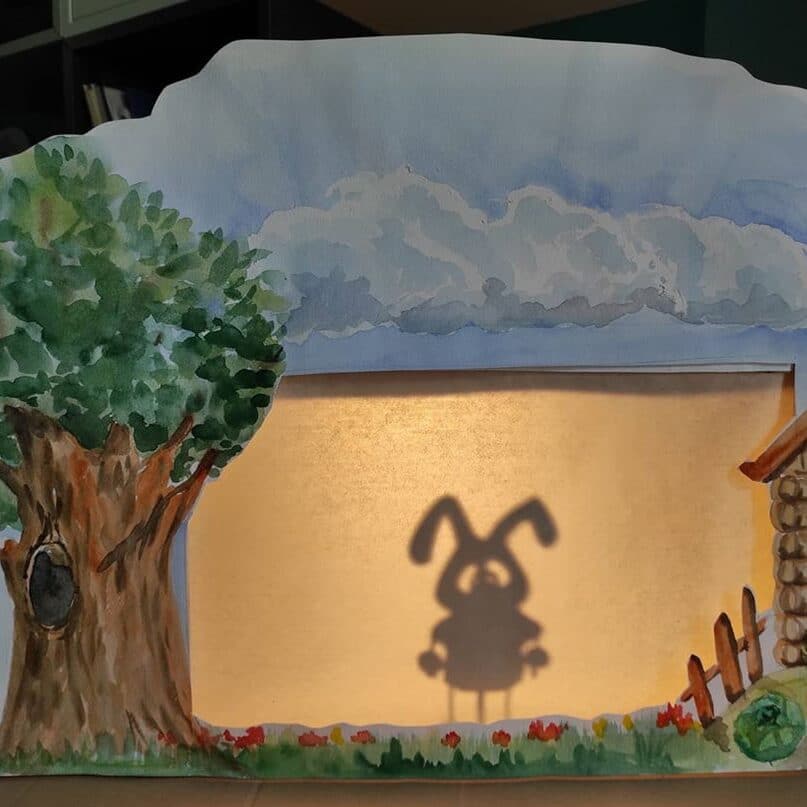
A. N. Leontiev
Soviet psychologist, author of the general psychological theory of activity
Speech occupies a central place in mental development, the process of its development is development itself.
— A. N. Leontyev Soviet psychologist, author of the general psychological theory of activity
Didactic games for the middle group of kindergarten
For preschoolers aged 3-4 years, didactic games are a way to expand their individual vocabulary and familiarize themselves with the objects of the surrounding world. Children learn the parameters and characteristics of objects, learn classification and comparison, and consolidate previously acquired knowledge.
When does this happen
For the game, prepare pictures with scenes from the daily life of a preschooler and place them in front of the students. When you say “morning,” children should look for images that correspond to that time of day, for example, brushing their teeth, doing exercises, combing their hair. Players who pick up the correct picture receive a point. The player with the most points wins.
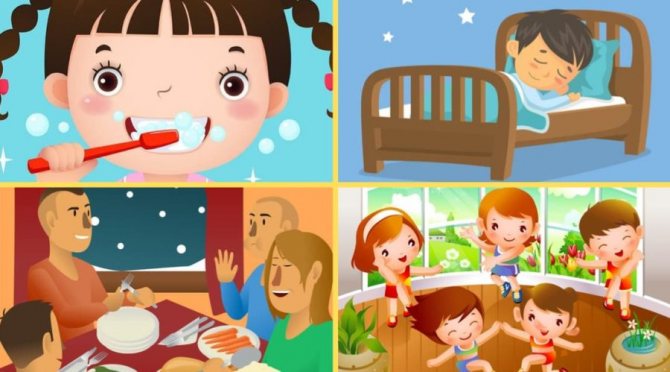
Does this happen?
Say phrases relating to objects and phenomena of the seasons, and the students must say whether this happens. For example: “On a hot summer day, we left the house with a sled to go down the hill.” Or: “In the spring, birds began to gather in flocks to fly to the southern regions.”
What can you do in this place
Ask a question about a certain place, and the children must say what can be done there. For example: “On the river you can... swim, sunbathe, build sand castles, fish, ride a boat.” Or: “In the garden you can... weed the beds, water the plants, harvest the crops, set up a scarecrow.”
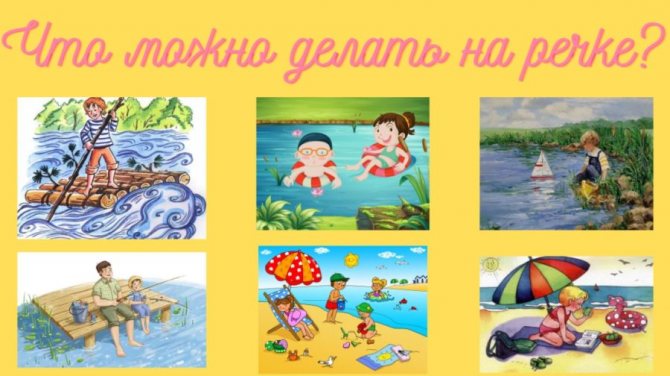
Name the signs
Say the words, and the children should take turns naming their signs. For example: a fox is red, cunning, beautiful, dexterous, tailed, fluffy. Or: the house is tall, brick, wooden, new, destroyed, spacious.
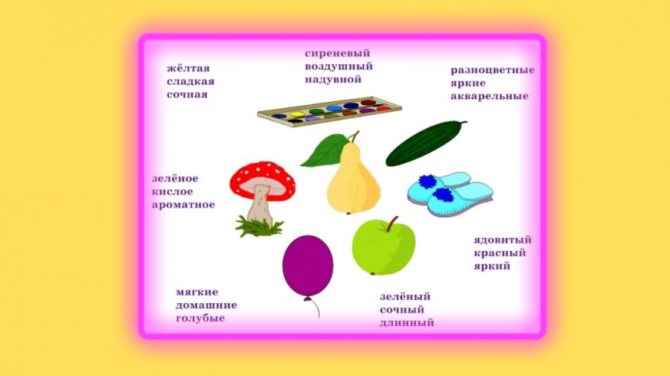
What does it sound like
For the game, prepare several boxes with different contents: sand, turf, grain, beans, pebbles. Demonstrate to the students what different substances sound like: shake each box. Then mix them up and, without showing the contents to the children, shake them again. Players must guess by the sound what substance is inside.

Shop
Organize an impromptu store, lay out various toys on the counter. Explain to children that they can buy a toy when they do not name it, but describe its features. Moreover, when describing, you cannot look at the item, so as not to give the seller a guess. The seller must, based on the signs presented, guess what kind of toy we are talking about and give it to the buyer. For example, a buyer says: “I need a round, bouncy, rubber toy.” The seller selects a ball.
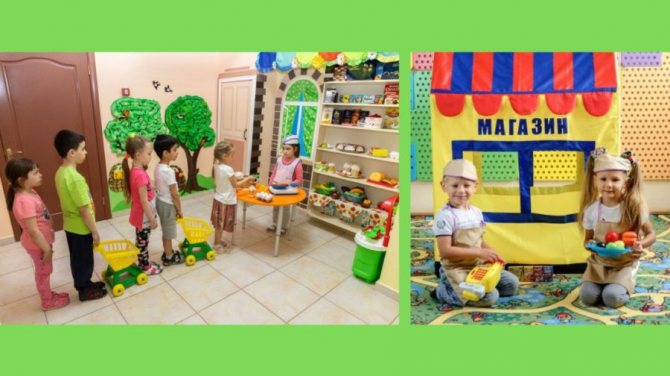
Hide and seek
Organize a game on the kindergarten playground if there are a lot of trees and shrubs of different types. Or take your students to a city park.
Children choose who will search and hide behind trees and bushes. Your task is to guide the seeker, suggest where to look, without naming the type of plant. For example: “Find the one who hid behind a tall tree with a hollow and carved leaves.”
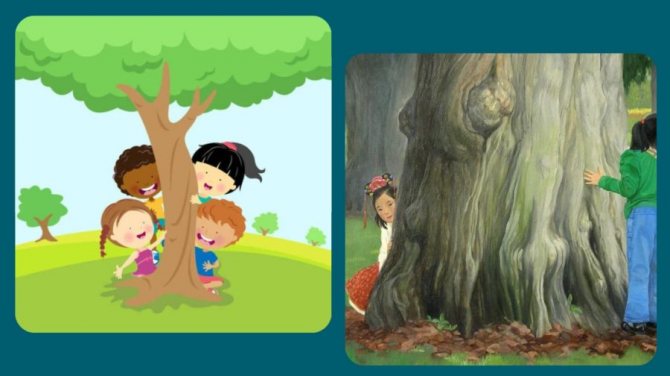
Name the action
Ask questions, and students must answer with verbs. The player who answers correctly receives a point. The one who collects the most points wins. For example: “What does the teacher do? - teaches a lesson, checks notebooks, educates, grades, writes on the board.” Or: “What can you do in the kitchen? “cook soup, peel potatoes, make tea, have lunch, wash dishes, bake pies.”
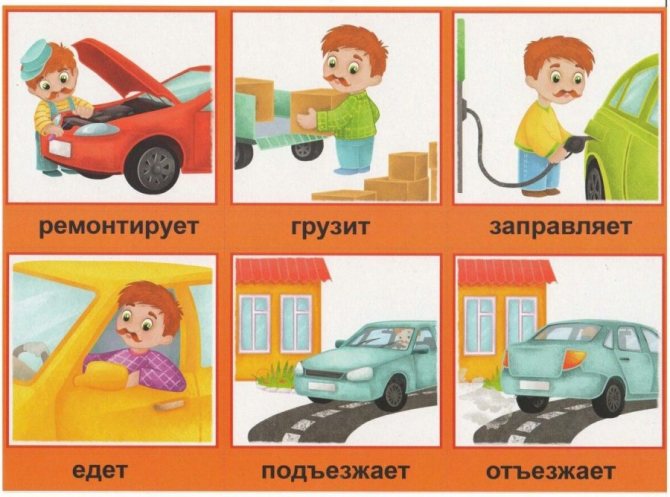
Games
You should practice every day, and in a week the first result will be visible: the baby’s attention, thinking, and memory will improve. During the games, he learns a lot of new things, and it turns out to be a kind of school.
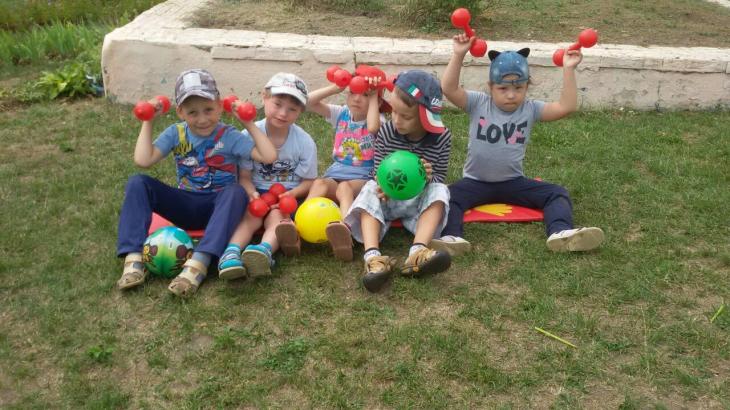
To develop thinking
"Yes, no, yes"
Goal: learn to ask questions, develop listening skills and attentiveness.
How to play: the teacher thinks of a word, and the children must guess it using questions that can only be answered “yes” or “no.”
"Visual yes-no-ka"
Goal: learn to ask questions, develop listening skills and attentiveness.
How to play: the teacher lays out toys or pictures on the table. Then he makes a wish for a toy or a picture. The child’s task is to guess what the teacher has planned using questions that can only be answered “yes” or “no.”
Didactic games for the senior group of kindergarten
Didactic games, intended for preschoolers 5-6 years of age, involve the completion of complex tasks and the formation of correct relationships. In this age group, the educational and developmental process is built in the form of basic classes, and through games, children consolidate acquired knowledge and skills. The competitive process plays a significant role, promoting proper emotional development and establishing positive contact with other people.
Find the ball and name the color
Children stand in a circle. Stand in the center, throw the ball to each player in turn, and call a specific color. The player's task is to name the object with the appropriate color, then throw the ball back. For example: orange - orange, apricot, carrot. Or: purple - eggplant, plum, grapes, lilac.

Generalization
The players stand in a row. Throw a ball to each of them in turn, after naming a generalizing concept. Children must name objects that correspond to the generalization. For example: fruits - apple, orange, peach, pear, apricot, lemon.
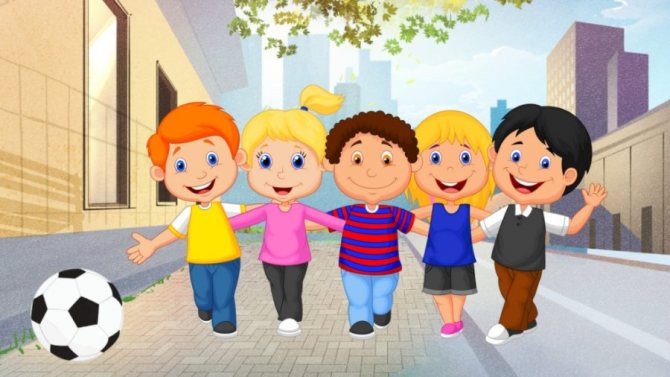
Complete the drawing
To play, print out cards depicting shapes that can become part of an object. Laminate the images so that you can draw on them with erasable markers.
Show the children the cards and ask them what the shapes look like. Hand out the pictures to the players so that they can fill in what they represent. Then erase the images, change cards between players. And so on until each child has fantasized about all the figures.
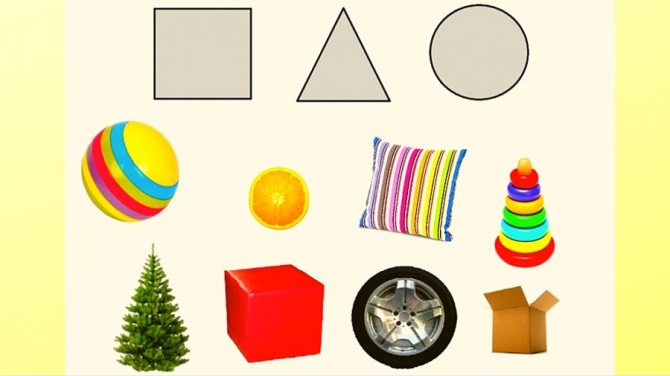
Remember and find
The game should be organized in a spacious room in which kindergarteners can navigate well. Place any toys on the floor. Ask the player to look at them carefully and remember the location. Then blindfold the child with a scarf. The game task is to blindly find objects laid out on the floor.
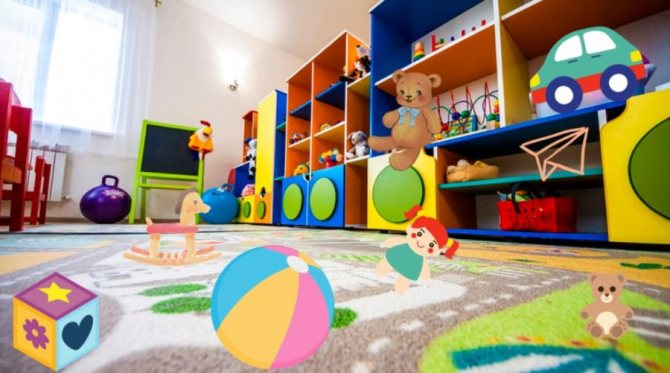
Columbus egg
To play, print out the egg template, then cut along the lines into 10 shapes. From these figures you can create a variety of silhouette images. This activity is extremely fascinating for preschoolers and develops their imagination.

Who will collect the items faster?
The game is competitive. For her, prepare cards depicting objects that relate to different professions. For each player, or for a group of players if there are many children, determine a profession. The game's task is to find three pictures in a pile that relate to a given profession faster than others. For example: cook - cap, pan, ladle. Or: doctor - white coat, thermometer, syringe. Or: seamstress - thread, scissors, sewing machine. Or: builder - helmet, drill, trowel.
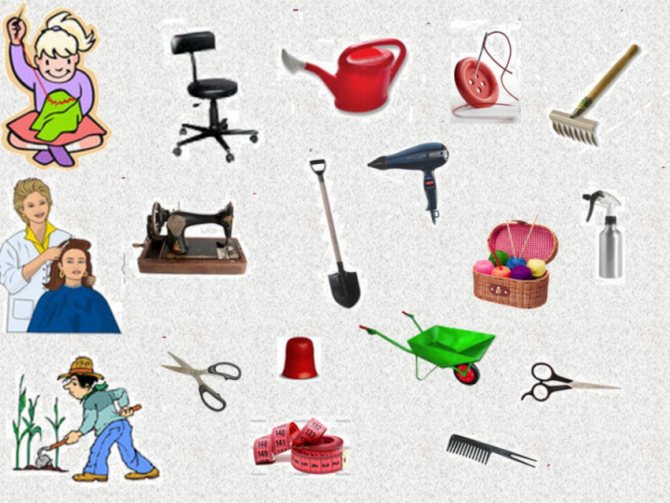
Complete the drawing
Give the players pictures of objects with missing parts, for example, a dog without a tail, a house without windows, a car without wheels. Children must say what is missing in the picture and complete this part.
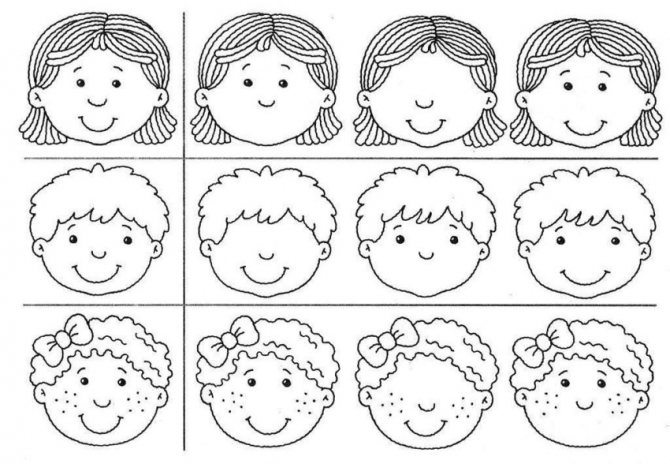
Calm, entertaining tasks
It is advisable to alternate active competitions with calm competitions that require attention, intelligence and ingenuity. In small rooms they are easy to carry out so that children enjoy playing in them, they should be fun and include fun tasks.
Inside out
The presenter pronounces the words, the children arrange the letters in reverse order, write the resulting word, for example, having heard “pencil case”, the child writes “lanep”, the word table - “lot”. Use a variety of words appropriate to the age of the players.
New fairy tale
Children are invited to turn into good wizards to help the sad story. Choose any fairy tale with a sad ending, and then ask the children to come up with a happy ending. Prepare your props and act out the scene.
Speak without hesitation
Participants receive a piece of paper with a picture, and the child who reads it the fastest wins.
Drawing blindly
Two teams participate, the players must draw a car blindly, the children take turns blindfolded and asked to draw one part of the car.
The one who is more like the real one wins.
Guess the song
This is a competition in which groups of children are given cards depicting various objects, animals, plants and things from famous songs.
Teams must guess which songs are encrypted in the pictures, the drawn train can mean the song “Blue Car”, the red-haired boy can mean the song “Red, Red, in a Mask”, the image of a mammoth can mean “Song about the Mammoth”. Caring parents can always make their children's holidays interesting if they take a creative approach to organizing it. A selection of fun games for children will help them with this!
Preparatory group
In the preparatory group, preschoolers prepare for the transition to first grade and acquire important knowledge and skills. Therefore, complex didactic games with a predominantly educational focus are applicable.
Train for animals
To play, make a cardboard train with 3 carriages: the first for animals, the second for birds, the third for insects. Print out pictures depicting fauna representatives. The game task is to correctly arrange the pictures into the cars.
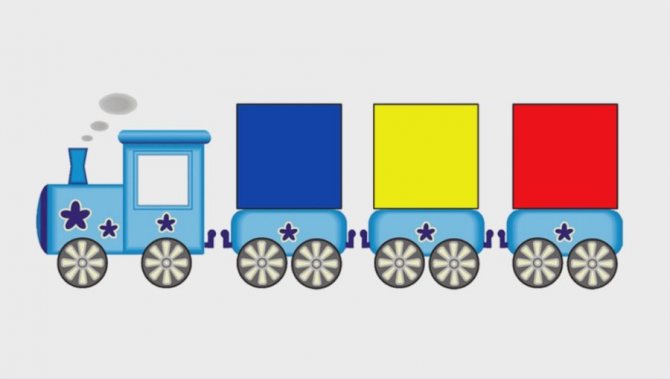
Man or nature
Children stand in a circle. Throw a ball to each of them in turn, asking at random, “What did the person do?” or “What has nature done?” In the first case, the answers will be, for example, “car”, “clothes”. And in the second there is “tree”, “river”, “stone”, “nest”. The player who finds it difficult to answer is eliminated from the circle. The winner is the last one to give the correct answer.
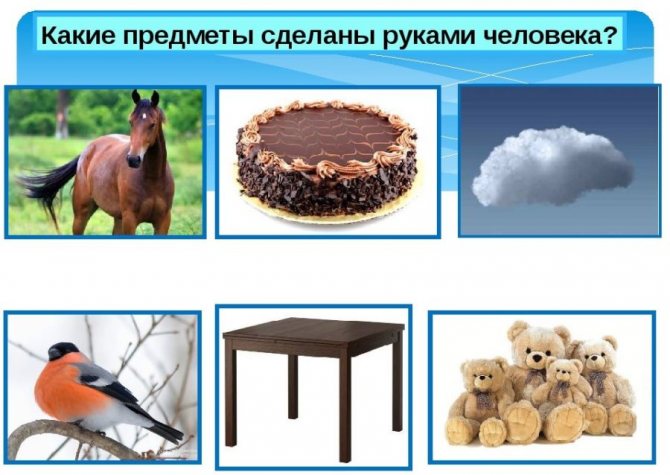
Name the plant
Say a sound and the players must remember the plants that start with it. For example: A – aster, watermelon, orange, pineapple, aloe, acacia, cherry plum.
Clouds
On a fine day, when cumulus clouds float in the sky, take the students for a walk. Let everyone choose a cloud and tell them what it reminds them of.


